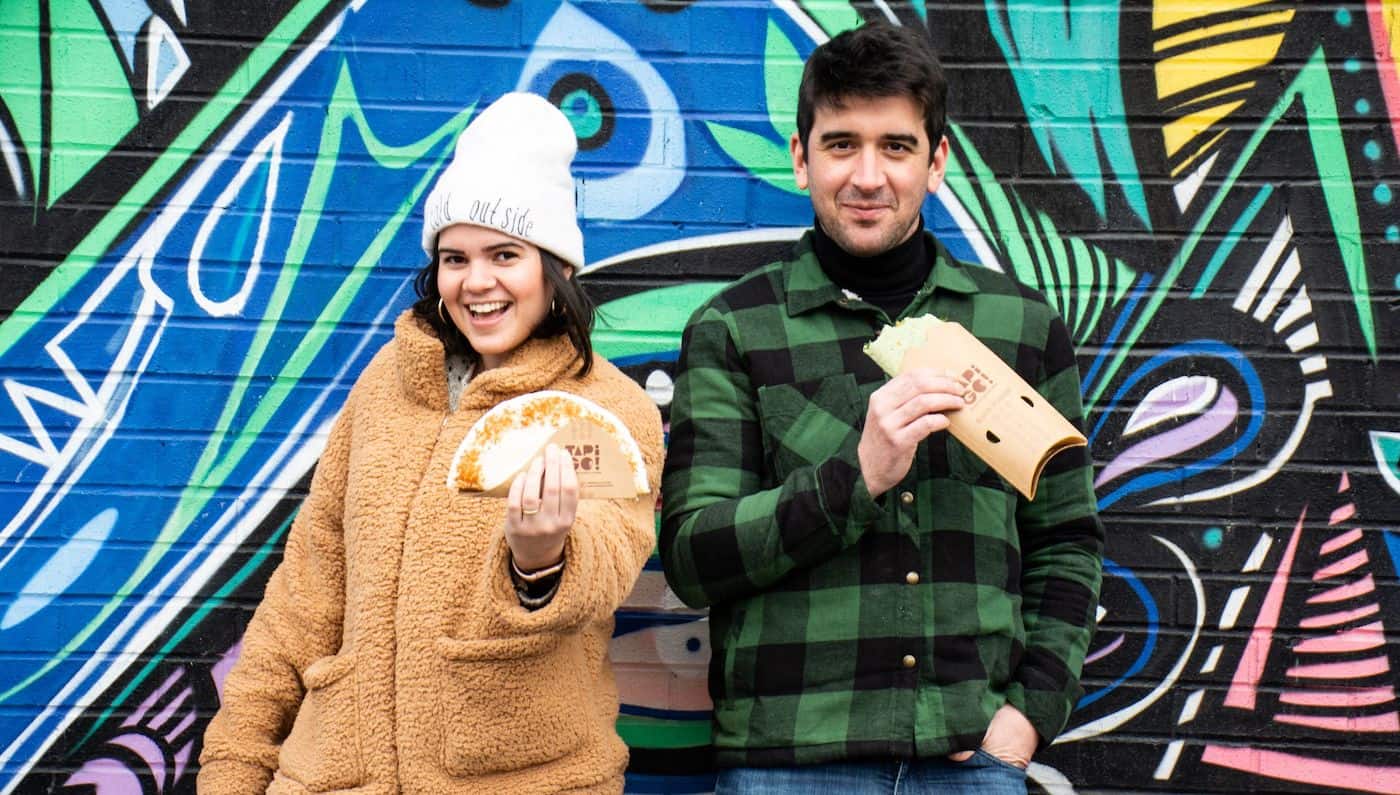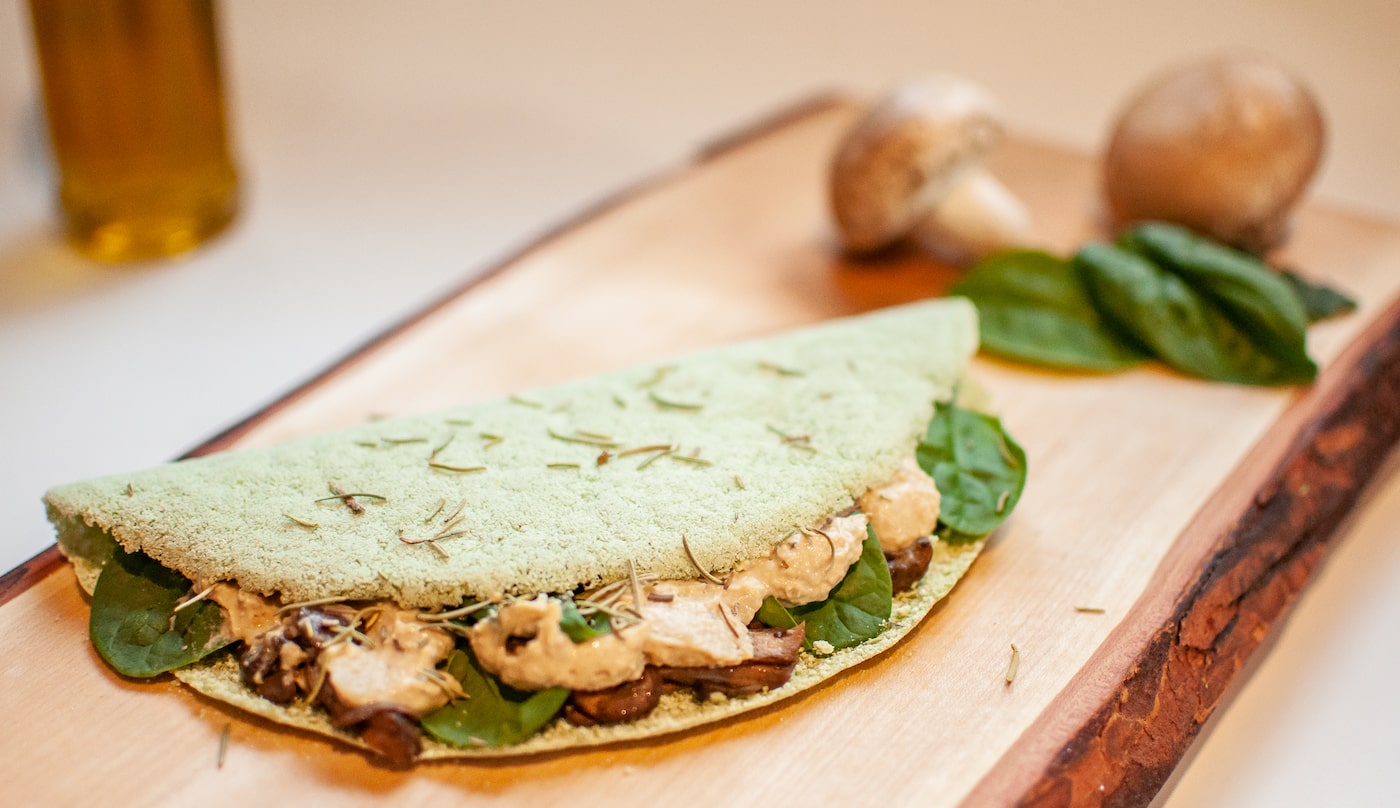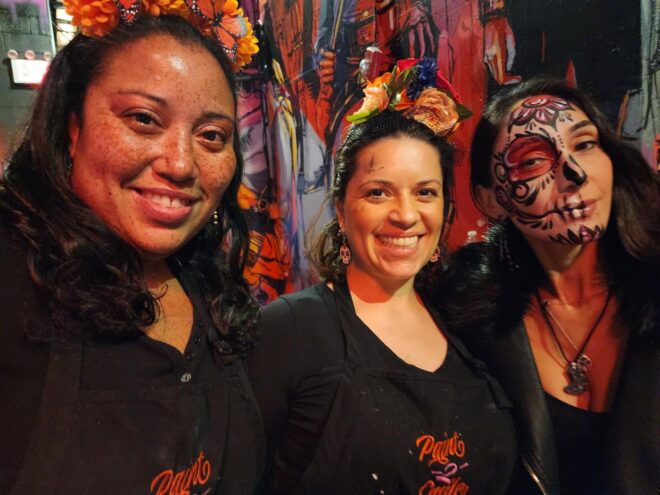Tapi Go!
Editorial Team
7 min read
In this installment of Meet the Merchant, we speak to Clarissa Aguiar of Tapi Go! in Toronto, Ontario. Clarissa shares insights on opening during the pandemic, introducing a staple of Brazilian food culture to Canada, and how Clover helps keep her whole team on the same page.
Clover: Nice to meet you, Clarissa. Tell us how you came to open Tapi Go!?
Clarissa Aguiar: I moved with my husband, Rui, to Canada in 2015 from Recife, in the north of Brazil. We both work full-time outside of food service—I am a civil engineer and Rui is an architect—but we have considered opening a restaurant for many years. I distinctly remember a moment when the first Subway restaurant opened in Recife, and I thought to myself, “why don’t we have something like this with Brazilian food, with tapioca?” Ever since then, I couldn’t get the idea out of my mind.
We stayed busy in our full-time jobs after moving to Canada, but continued to brainstorm on the side how we would one day open a tapioca quick-serve restaurant. When the pandemic hit and we started working from home last March, we suddenly had more time to look for storefronts and plan more concretely how we would turn our dream into a reality.
Clover: Wait. So you and your husband work full-time in engineering and architecture while you opened a restaurant during a pandemic?
Aguiar: Yes, it was insane! We decided to jump in with both feet. But our respective backgrounds really helped us along the way. Rui, the architect, designed and completely renovated our space. Luckily, we both saw eye to eye on the aesthetics we wanted for the restaurant and the functionality we needed for the kitchen.
Clover: Were you selling tapioca products before you opened the store?
Aguiar: Actually, no. While we did put a lot of energy into developing our recipes, we also knew that our idea for Tapi Go! would only work with a really efficient kitchen. In our preparation to open, we spent a lot of time setting up our equipment to allow an assembly line kind of flow. We wanted to start on day one with a clear method for making each recipe and use only the best equipment and the best techniques. So I think a lot of the time we could have been selling the product early on, we used instead to prepare our kitchen setup.
Clover: Tell me more about tapioca. What does your preparation and cooking look like? Why does it work so well in a variety of sweet and savory dishes?
Aguiar: Tapioca is a typical staple of Brazil, especially in the north. It comes from the cassava root, which grows in tropical regions. Indigenous communities have cultivated cassava since long before Brazil was colonized by the Portuguese, and it tells a lot about our culture.
The neutrality of tapioca is what allows it to take on flavor profiles really well. It’s such a versatile product; you can have sweet, savory, vegan, meat, anything! What sets tapioca apart most, though, is the texture. Tapioca gives a chewy and crispy texture. And to prepare the tapioca crepe—that’s the term we use for our creations—we don’t need any oil.
Though the ingredients are simple, the process of creating a tapioca crepe from starch requires many steps. We start by hydrating and coloring the cassava starch with a variety of ingredients—including spinach, cocoa powder, beets—to create tapioca flour. We use a special sieve to transfer the hydrated flour evenly into the pan, which allows the crepe cook evenly without cracks or bubbles.
We also invested in a vacuum pack to store batches of flour so that it stays evenly hydrated in storage. There are a lot of variables to consider, and we are certainly learning along the way! Having the store helps us develop new tricks all the time and further refine our own techniques.

Clover: Where do you source your products? Cassava root probably doesn’t grow in abundance in Toronto.
Aguiar: You’re right. We do have to import our cassava root to make the tapioca flour, but we offset our carbon footprint by growing many of our vegetables hydroponically at home—arugula, spinach, lettuce, chives, and basil.
Clover: Wow, you two must be very busy! Tell us more about how you chose Clover for your payments processing.
Aguiar: Well, we did a lot of research on various POS systems. The first thing we noticed with Clover was the option to have two screens: one facing us and one facing the customer. COVID safety standards were a top priority as we were opening, so the Clover Station Pro seemed like a no brainer. The customer can see and confirm that their order is correct. It keeps everyone on the same page.
It’s also really easy and intuitive to use Clover for updating inventory and generating reports, both on the machine and through the Clover Dashboard. We can easily filter through our data to track our best sellers. I always share this information with our team, too.
Our employees especially appreciate the seamless interaction with other apps. When they get into the store, they can clock in using Homebase right on the POS. I am the one who sets the schedule, which I like to do from my computer or phone. But any time I’m in the store, I can check the Clover and see the same information. Everything is synced at the same time; I don’t see any delays. We’re very happy and it fits our needs very well. Especially with the social distancing requirements of COVID, it was really useful to have a machine that could bring us closer this way.
Clover: What has it been like to open a business during the pandemic?
Aguiar: Back when everything first started, we thought COVID would definitely be over by the end of the year. When we signed a lease in May 2020, we decided to open in the fall, and assumed that by then COVID numbers would be trending downward. But of course, that’s not how things happened.
Since our opening, however, we’ve focused on meeting the challenges day-by-day. For example, we prioritized setting up for takeout because we knew that dine-in would not be an option. Finding the right packaging was important. We serve our crepes in a pillow box, which works very well on the go.
Since we are still dealing with lockdowns in Toronto, we want to continue focusing on takeout and expanding our offerings that allow customers to share meals outdoors. Beyond tapioca, we are hoping to start selling açai bowls soon. We have a park very close to our storefront, and many people go there in the summer just to hang around. Tapioca and açai are perfect for that.
Clover: It’s wonderful to hear how you met the challenges of this time, and continue to look ahead with optimism.
Aguiar: Thank you. It was really nice reflecting on our dream of Tapi Go!—how much we’ve accomplished so far and the path we have in front of us. It’s nice to see the future ahead, especially during times where we don’t know what tomorrow holds. It’s always good to dream. To learn more, please visit our website at www.tapigotapioca.com or follow us on Instagram @tapigotapioca.
Read more of our Meet the Merchant stories for real-life stories of small businesses in action all over the country. Want to be featured in this series? Fill out our questionnaire, and if we can include you in a future interview cycle, we’ll send you an invitation!
Related Posts
Harlem Doggie Day Spa
Paint 2 Smile
Popular Topics
Stay in touch
Sign up and learn more about Clover.
Thank you for your subscription!
More posts about starting a small business
eBook





